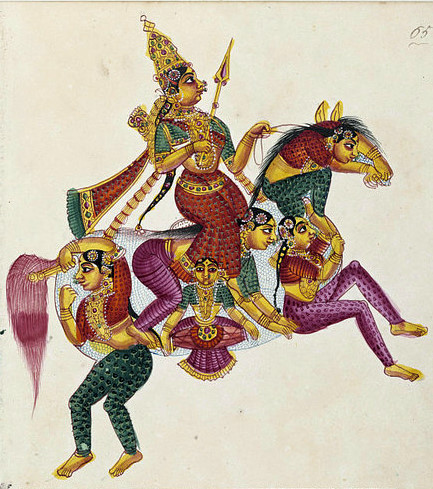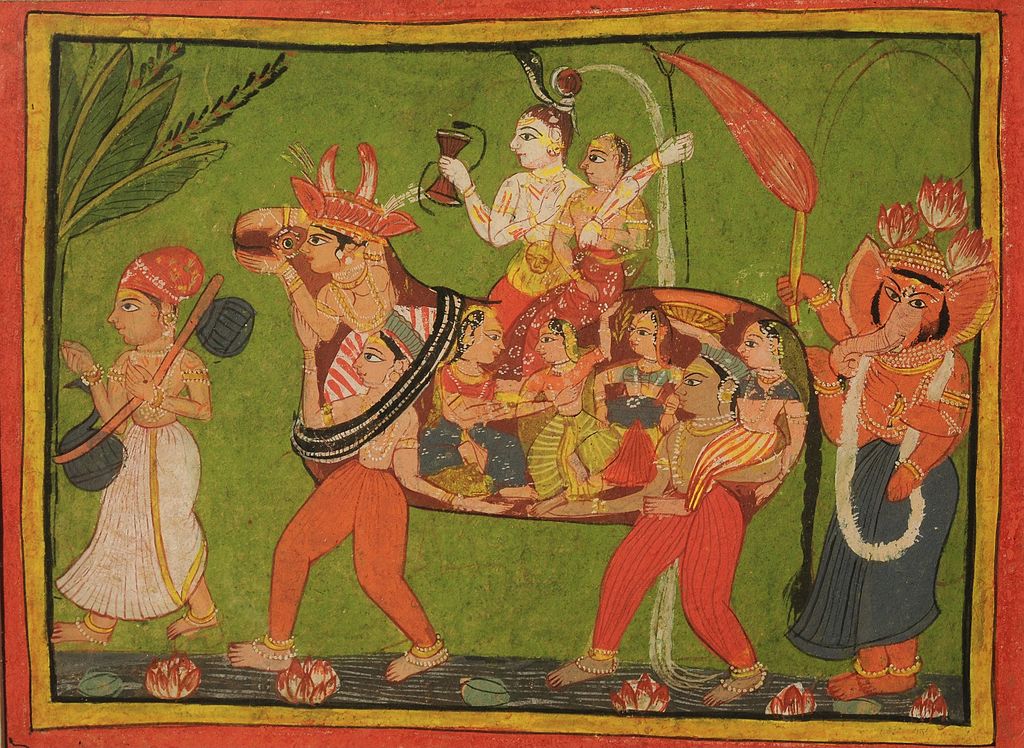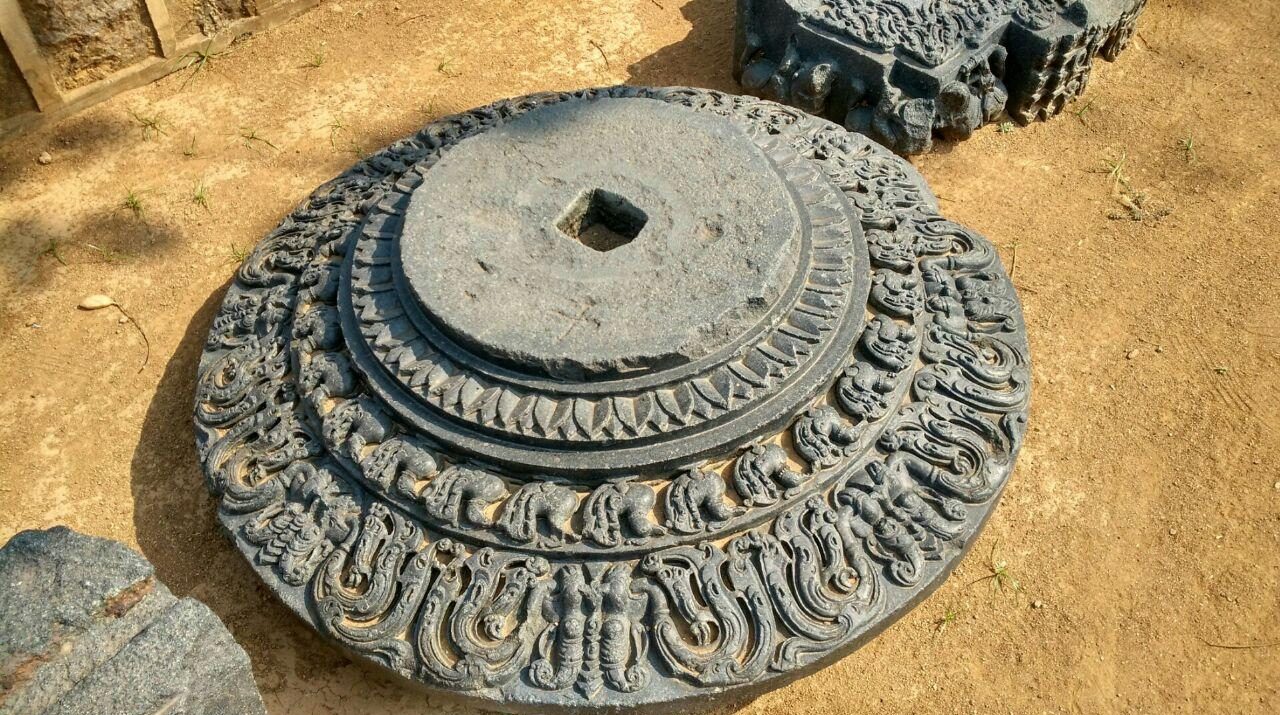#Didyouknow that ”Composite animals” and beings are found in Indian and other art? These and fantastic, fabulous and very interesting. They are made up of different beings within themselves, could be only animals or only humans or a composition of both. The meaning of such images is open to interpretation, but many scholars believe them to have mystical significance—likely referring to the unity of all creatures within God. Let us see a few examples of this genre of painting !
The elephant from The Met shows that the elephant is made up of human and other figures. Female dancers and musicians in Indian garb have formed the legs, body, and tusks of the purple elephant here. Astride the beast are a noble figure with an elephant goad, acting as mahout; a female to the rear of him holds a cloth fan. the depiction of the elephant here is a metaphoric representation of court pageantry.
Deccan, probably Golconda, Met Museum, New York.
A warrior riding a composite horse, opaque watercolor on paper. The horse is made up of other animals and humans including a fish.

Composite horse, Jaipur, Mid 19th century.
Source : Bonhams
The image of an elephant made from opaque pigments heightened with gold on paper, a peri wearing gold illuminated robes and crown sits on the animal made up of human and animal figures, the elephant follows a blue div who parades before it carrying a bugle and snake, laid down between gold and polychrome rules on green borders with gold floral illumination.
.jpg?mode=max)
Delhi school, 1800, Source Christies.
The composite animal illustrations, associated with Indian painting, traces its roots to early Buddhist manuscripts in Central Asia. By the end of sixteenth century, the subject reached great popularity among Persian miniaturists, and subsequently influenced the Indian schools of miniature painting, including the Jaipur school that produced the work depicted below. A maharaja, wears sleeves and pant-legs created with makara-like beasts, while his turban and shoulder pads are formed by lion-heads, symbolising power. He controls the large tiger beast by a snake acting as its leash. The beast is made up of different animals, including tigers, crocodiles, rams, doves, an elephant, and human beings.

Goddess Rati is the goddess of love in Hindu mythology. Here she is depicted on a composite horse made up of few women, probably dancers.

A man playing a musical instrument leads the procession followed by Shiva and Parvati seated on a cow. Four-armed Ganesh follows them with a fly-whisk, attending the royal couple. This is a ”narikunjan” (composite creature made up of women).

This image of Lord Krishna on a Gopi-elephant, from the work. by Fanny Parkes (1794-1875)]. ”Wanderings of a Pilgrim, in Search of the Picturesque”, during Four-And-Twenty Years in the East, 1850. Lord Krishna is seen riding on an elephant comprising of ”gopis” or cowherd girls.

Posted by
Soma Ghosh
c author
References-
- Goud, Balagouni Krishna, and M. V. S. Sarma. “COMPOSITE ART: WITH SPECIAL REFERENCE TO THE MINIATURE PAINTINGS IN SALAR JUNG MUSEUM.” Proceedings of the Indian History Congress, vol. 73, Indian History Congress, 2012, pp. 416–20, http://www.jstor.org/stable/44156232.
- Images are from Wikimedia Commons if not otherwise mentioned.
